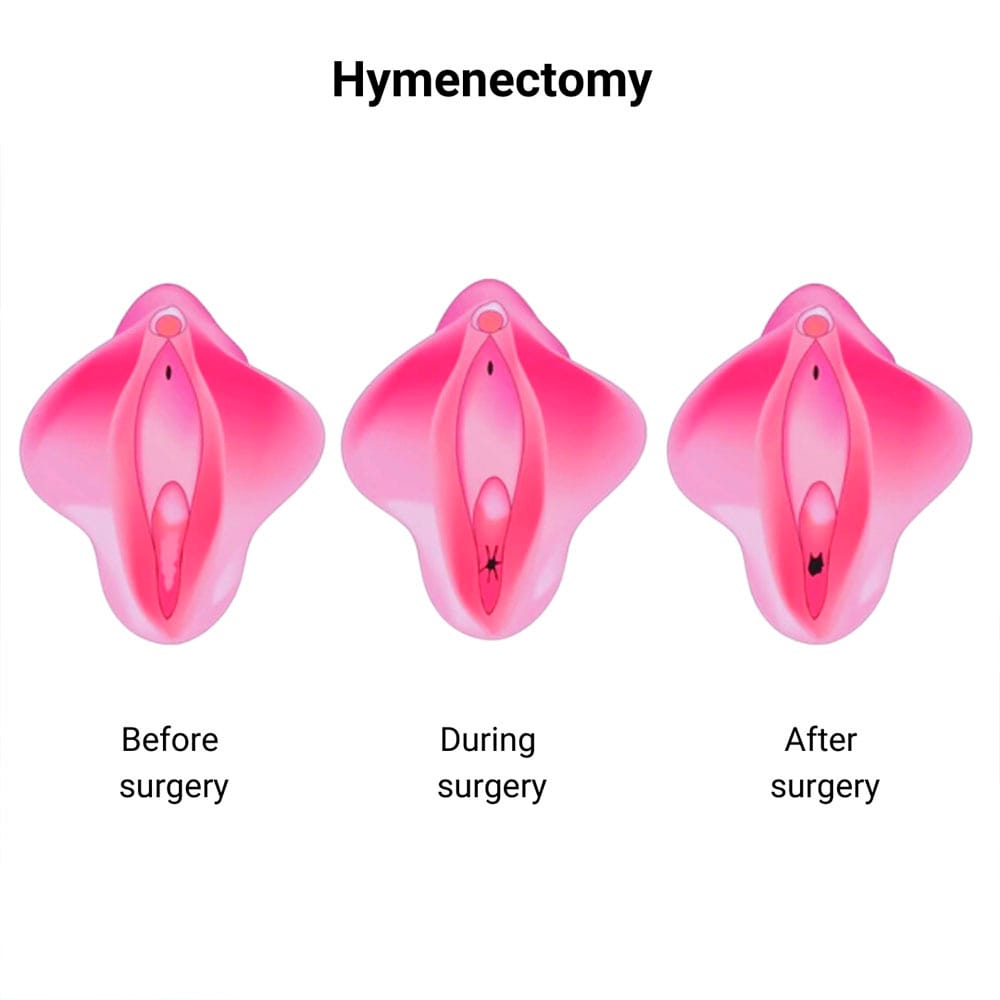What Is a Hymenectomy?
 A hymenectomy is a minor surgical vaginal procedure to remove or open the hymen, which is a thin membrane covering the vaginal opening. The aim is to remove the extra tissue from an abnormally thick hymen. The surgery is performed to address issues that may cause discomfort in the vagina, using a tampon or a condition called dyspareunia during intercourse.
A hymenectomy is a minor surgical vaginal procedure to remove or open the hymen, which is a thin membrane covering the vaginal opening. The aim is to remove the extra tissue from an abnormally thick hymen. The surgery is performed to address issues that may cause discomfort in the vagina, using a tampon or a condition called dyspareunia during intercourse.
An abnormally thick hymen can block your menstrual flow causing symptoms similar to amenorrhea or regular pelvic pain. A hymenectomy also corrects birth defects like an irregularly formed hymen, that affects its size, shape and thickness, which prevents normal menstrual cycles and pain-free intercourse.
If you’re having pain or discomfort while wearing a tampon or during sex, you may require septate hymen surgery. Dr Felix Cohen, founder and director of Cohen Medical Practice (CMP) in NYC specializes in gynecological surgeries and performs annual gynecological exams. With years of experience, he can easily diagnose your issue and perform a hymenectomy if you need one.
His practice offers a wide range of other procedures as well, including:
- Hysteroscopy
- Oophorectomy
- Uterine suspension
- Vaginal vault suspension
- Tubal ligation
- Laparoscopic myomectomy
Why Might I Need a Hymenectomy?
You might need a hymenectomy if you have congenital conditions of the hymen or other rare disorders that affect your normal activities. Hymen-related issues affect your periods and sex life, and cause extreme pain.
Your doctor might recommend a hymenectomy for conditions such as:
- Septate hymen. If your hymen has a thick, fibrous band dividing it and giving it the appearance of two hymens, you may need a septate hymen surgery.
- Microperforate hymen. If your hymen is unusually thick and covers the entire vagina except for one small hole, it can lead to obstruction of the blood flow during your periods and pain.
- Hymenal agensis. When the hymen is absent or formation is malformed, it causes pain and problems wearing tampons.
Cribriform hymen. If your hymen contains many small holes, you experience abnormal bleeding. - Imperforate hymen. If your hymen completely covers the opening to your vagina, you’re limited in a number of ways from having normal periods and sex.
A partial hymenectomy. This is usually done when all you need is a little more room to create an effective opening in your hymen.
Your doctor may ask you not to get a hymenctomy in certain situations. If you have any active vaginal or pelvic infections like bacterial vaginosis or a yeast infection, which must be treated first.
Other conditions that may prevent you from getting this procedure include:
- Diabetes or any bleeding disorders
- Pregnancy
- Allergic reaction
- Vaginal atrophy
- Endometriosis
- Pelvic inflammatory disease
How Is a Hymenectomy Performed?
A hymenectomy involves several steps and is performed under local or sometimes general anesthesia, depending on your preferences and the severity of your condition.
The hymenectomy procedure generally includes:
- Local anesthesia is given to numb the area for minor hymenectomy. If you get anxious or nervous, or the procedure is extensive, then general anesthesia may be given.
- A small incision in the hymen is made to remove or fix the abnormal tissue. The technique used depends on the issue you’re having.
- Surgical scissors and scalpels are used to carefully remove or modify the tissue while making sure the surrounding structures are safe.
- Stitches aren’t always needed as the hymen’s tissue is extremely delicate. But if stitches are used, they’re dissolvable.
- The area is cleaned and bandages applied if necessary.
A hymenectomy is a quick procedure and normally takes 15 to 30 minutes. The duration depends on the severity of the hymen issue and the surgical technique that’s used. The procedure is pain-free due to the anesthesia given. You may experience bleeding after hymenectomy procedures, which is usually minimal. With the right medication and care, your bleeding is well-managed with the use of sanitary pads instead of tampons.
What Are the Post-Operative Instructions?
After the surgery, you’re taken into a recovery room, where your vital signs are checked. Sometimes you may have to spend the night at the hospital, but that’s very rare.
It’s vital that you closely follow post-op instructions for the best chance of a successful recovery, which include:
- Keeping your wound clean and changing the dressing as instructed
- Taking warm sitz baths a few times a day
- Managing any pain after the surgery exactly as prescribed
- Avoiding physical activities and heavy lifting for a few weeks
- Refraining from sexual activities until after your follow-up visit when your CMP doctor gives you the go-ahead
If you notice heavy bleeding after hymenectomy that makes you change your pads frequently, call your doctor. Call your surgeon if you notice signs of infection like fever, unusual discharge or increased pain.
Does a Hymenectomy Have Any Side Effects?
As with any surgery, there are minimal risks involved like infection and temporary pain, but with proper hygiene and the right medication, your pain becomes manageable and decreases as you heal. With his experience in pain management and personalized care, Dr. Cohen creates customized pain management strategies for you that help your healing journey. He ensures your hymenectomy is completed with minimal risks and with maximum efficiency.
By putting all the focus on the important areas, Dr. Cohen and his staff at Cohen Medical Practice (CMP) ensure your hymenectomy leads to a healthy and comfortable recovery. Contact Cohen Medical Practice (CMP) right away for a complete checkup and accurate diagnosis, followed by the most appropriate treatment.

